Discover Switzerland's Scenic Routes
Experience the breathtaking beauty of the Swiss Alps, picturesque valleys, and stunning mountain passes
Swiss Vignette Information
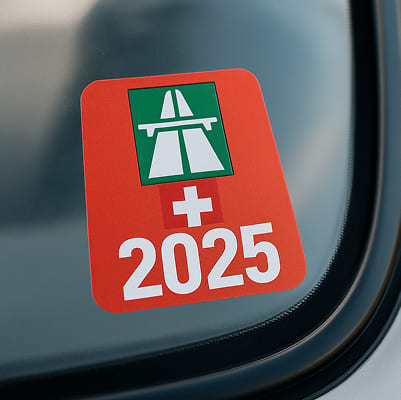
What is a Swiss Vignette?
A vignette is a toll sticker required for using the motorways in Switzerland. Every vehicle with a total weight of up to 3.5 tonnes needs to display a valid vignette when traveling on Swiss motorways.
The vignette is valid for one calendar year, from December 1st of the previous year to January 31st of the following year, giving drivers 14 months of use.
Where to Purchase
Before Entering Switzerland
- At border crossings
- Gas stations near the border
- Online through official retailers
- Automobile clubs in neighboring countries
Within Switzerland
- Post offices
- Gas stations
- Vehicle licensing offices
- Custom offices
Important Notes
- The vignette must be properly affixed to your windshield to be valid.
- Driving on motorways without a valid vignette can result in a fine.
- The vignette is non-transferable between vehicles.
- Some mountain passes and tunnels may require additional tolls.
Vehicle Requirements

Cars & Light Vehicles
- Valid vignette is required for all motorways
- Working headlights, taillights, and turn signals
- Functioning windshield wipers
- Snow tires or chains in winter conditions
- Reflective vest accessible from driver's seat
- Warning triangle for emergency stops
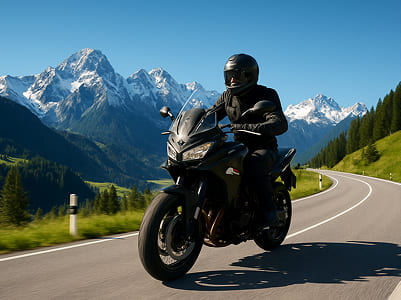
Motorcycles
- Valid vignette required for motorways
- Daytime running lights required
- Helmet mandatory for riders and passengers
- Proper tires for mountain roads
- Lights must be on at all times
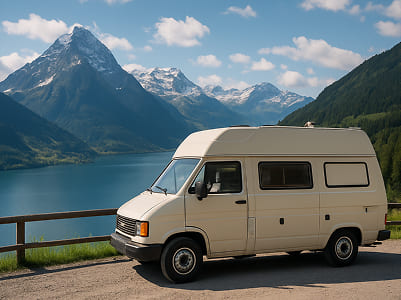
Campervans & RVs
- Vehicles under 3.5t: Regular vignette
- Vehicles over 3.5t: Heavy vehicle tax
- Extra caution for tunnel height restrictions
- Check mountain pass accessibility
- Winter tires required in snowy conditions
- Check camping regulations at stops
Seasonal Requirements
Winter (November - April)

- Winter/snow tires highly recommended
- Snow chains for mountain passes
- Ice scraper and antifreeze
- Emergency blanket recommended
Summer (May - October)

- Check brakes before mountain driving
- Adequate cooling system function
- Sunglasses for high-altitude glare
- Water for longer mountain routes
Scenic Routes
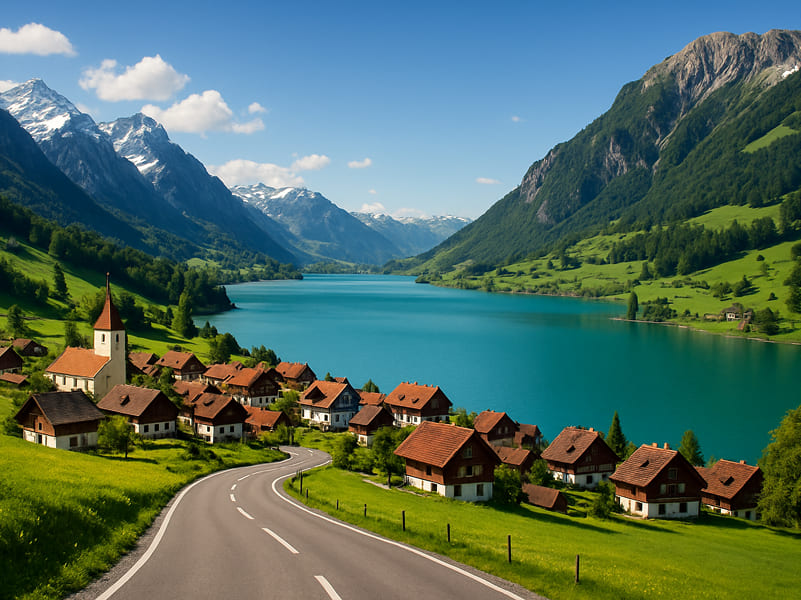
Grand Tour of Switzerland
FeaturedThe Grand Tour of Switzerland is a 1,600 km route that combines the highlights of Switzerland into one breathtaking journey. From palm-lined lakeshores to sparkling glaciers, from medieval villages to cities buzzing with culture, this route showcases the best of Switzerland.
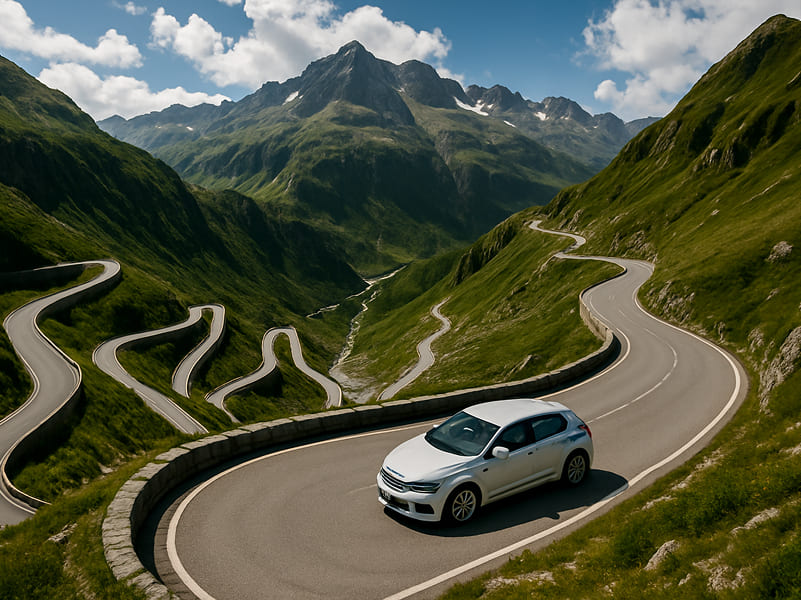
Furka Pass
The Furka Pass is a high mountain pass in the Swiss Alps connecting Gletsch, Valais with Realp, Uri. At an elevation of 2,429 meters, it offers spectacular views of the surrounding Alps. The winding roads and hairpin turns make this a thrilling drive for motoring enthusiasts.
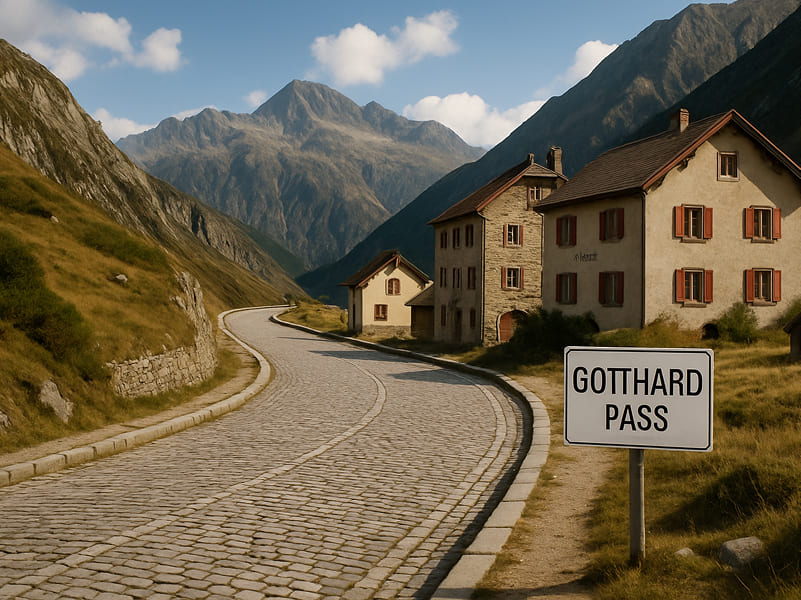
Gotthard Pass
The Gotthard Pass connects northern and southern Switzerland through the Saint-Gotthard Massif. This historic Alpine pass has been a crucial trade route since the 13th century. Today, you can choose between the modern highway tunnel, the historic cobblestone road, or the scenic Tremola route with its numerous switchbacks.
Interactive Map
Explore the scenic routes of Switzerland with our interactive map. Click on a route to view more details, or hover over the routes in the list to see them highlighted on the map.
Loading map...
Please wait while we load the interactive map
Please note: Some mountain passes may be closed during winter months or due to weather conditions. Always check current road status before planning your trip.
Mountain Passes & Tunnels
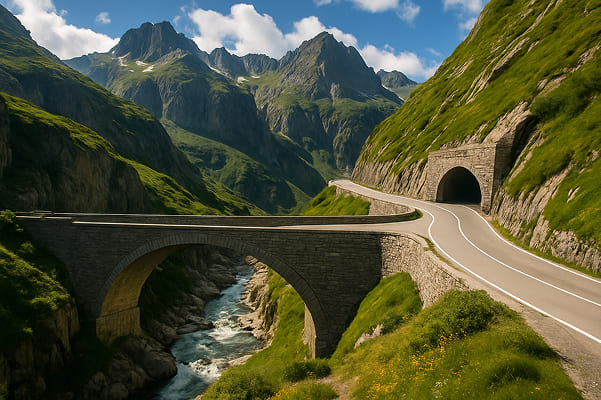
Famous Mountain Passes
Switzerland is home to some of the most spectacular mountain passes in Europe. These winding roads offer breathtaking views and a thrilling driving experience.
Furka Pass (2,429m)
A high mountain pass with stunning views of the Rhône Glacier. Featured in the James Bond movie "Goldfinger".
Susten Pass (2,224m)
Connects the Reuss Valley with the Hasli Valley, offering spectacular mountain and glacier views.
Grimsel Pass (2,164m)
Links the Hasli Valley with the Goms Valley, with distinctive granite landscapes and reservoir lakes.
San Bernardino Pass (2,065m)
Historic route connecting the northern and southern parts of Switzerland.
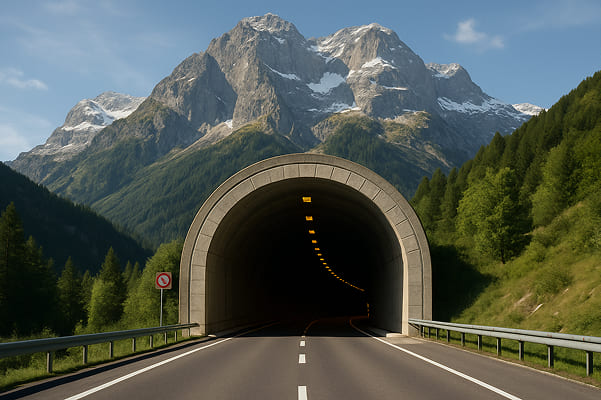
Major Tunnels
Swiss engineering excellence is showcased in these impressive tunnels that cut through the Alps, providing vital transportation links.
Gotthard Base Tunnel (57km)
The world's longest and deepest traffic tunnel, revolutionizing transport through the Alps.
Gotthard Road Tunnel (16.9km)
A major road tunnel connecting northern and southern Switzerland. Alternative to the Gotthard Pass.
Lötschberg Tunnel (14.6km)
Railway tunnel through the Bernese Alps, connecting the cantons of Bern and Valais.
San Bernardino Tunnel (6.6km)
Road tunnel that serves as a winter alternative to the San Bernardino Pass.
Seasonal Information
| Mountain Pass | Elevation | Usually Open | Alternative Route |
|---|---|---|---|
| Furka Pass | 2,429 m | June - October | Furka Base Tunnel |
| Grimsel Pass | 2,164 m | June - October | Via Interlaken |
| Susten Pass | 2,224 m | June - October | Gotthard Tunnel |
| Gotthard Pass | 2,106 m | June - October | Gotthard Road Tunnel |
| San Bernardino Pass | 2,065 m | May - November | San Bernardino Tunnel |
| Simplon Pass | 2,005 m | Year-round | Simplon Tunnel |
Important Notice
Opening dates are approximate and subject to weather conditions. Always check the current status of mountain passes before your journey. Sudden weather changes can lead to temporary closures even during summer months.
Frequently Asked Questions
The Swiss vignette is a toll sticker required for all vehicles using Swiss motorways (highways). Any vehicle with a total weight up to 3.5 tonnes needs a valid vignette. This includes cars, motorcycles, and campers/motorhomes under this weight limit. It's valid for one calendar year, from December 1st of the previous year to January 31st of the following year.
You need a vignette only if you plan to use the motorway network. If you are exclusively using non-motorway roads, a vignette is not required, but this can make travel much slower and more complicated.
You can purchase a Swiss vignette from numerous locations:
- Border crossings and customs offices
- Gas stations near the Swiss border and throughout Switzerland
- Post offices in Switzerland
- Online through authorized retailers (must be affixed before entering Switzerland)
- Automobile clubs in neighboring countries
It's recommended to purchase your vignette before entering Switzerland to avoid potential fines.
Most high Alpine passes in Switzerland are closed during winter due to heavy snowfall. Typically, these passes open in late May to June and close in October or November, depending on weather conditions. Some passes like the Simplon may remain open year-round but can close temporarily during severe weather.
For winter travel, tunnels and lower-altitude routes provide alternatives. Always check current road conditions before planning a trip through mountain passes, especially in spring and autumn when conditions can change rapidly.
While not legally required year-round, winter tires are strongly recommended during winter months (November to April). In mountain areas, you might need snow chains during heavy snowfall, and some routes may require them by law during winter conditions.
Other equipment you should have:
- Warning triangle (mandatory)
- Reflective vest (recommended to be accessible from driver's seat)
- First aid kit (recommended)
- Headlamp beam deflectors (if your vehicle is from a country with right-hand traffic)
Swiss speed limits are strictly enforced with heavy fines for violations:
- Motorways: 120 km/h
- Expressways: 100 km/h
- Main roads outside built-up areas: 80 km/h
- Built-up areas (towns and villages): 50 km/h
- Residential zones: 30 km/h or 20 km/h (as posted)
Speed limits may be lower in mountain areas and during adverse weather conditions. Speed cameras are common throughout Switzerland.
While the vignette covers most motorways, there are a few exceptions:
- The Great St. Bernard Tunnel (between Switzerland and Italy) has a separate toll
- Some private mountain roads and passes may have their own toll fees
- Car train services that transport vehicles through certain tunnels (like the Furka Base Tunnel) have separate fees
These additional tolls are separate from the vignette system and must be paid at the specific location.
The best time to enjoy Swiss mountain passes is during summer months (late June to early September) when all passes are typically open and weather conditions are most favorable. Specifically:
- Mid-June to mid-July: Lush green landscapes with possible snow still visible on peaks
- Late July to August: Peak season with best weather but more tourists
- September to early October: Beautiful autumn colors with fewer tourists
For the most enjoyable experience, drive on weekdays rather than weekends to avoid traffic, and start early in the morning for the best light and views.
Driving in Switzerland is generally straightforward with well-maintained roads and clear signage. However, mountain roads present unique challenges:
- Narrow roads with hairpin turns require careful driving
- Steep gradients demand good braking technique (use engine braking)
- Weather can change rapidly, especially at higher elevations
- Some passes have single-lane sections with passing places
If you're uncomfortable with mountain driving, consider using tunnels or train services that transport vehicles through the mountains. Swiss drivers tend to follow rules strictly, so adhering to speed limits and road signs is important.